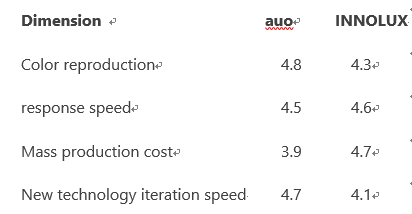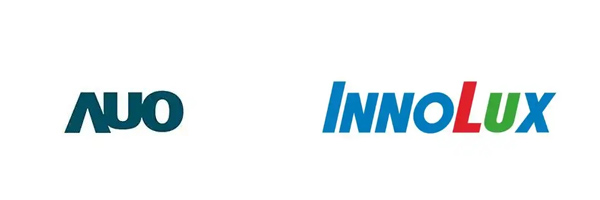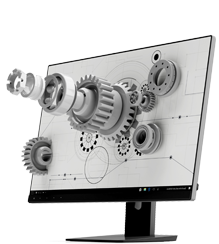Which is better, AUO or Innolux LCD display?

AUO vs Innolux: The technological game and market differentiation between the two giants of LCD screens,The technological game and market differentiation between the two giants of LCD screens In the global LCD panel industry,
AUO vs Innolux: The technological game and market differentiation between the two giants of LCD screens
In the global LCD panel industry, Taiwanese manufacturers AUO and Innolux have always held important positions. The two have the same root and origin, but have developed completely different technological routes and market strategies. This article will deeply analyze them from three dimensions: core technology, product matrix, and application adaptability, providing selection references for industrial design, consumer electronics procurement, and end users.
1. Comparison of Technical Genes: Innovation Breakthrough vs Scale Effect
AUO: Leader in High end Display Technology
Mini LED backlight technology:
AU is the first to achieve mass production level Mini LED screens, with its AmLED technology achieving dynamic dimming zoning (up to 2304 zones) and contrast ratios exceeding 1000000:1 (such as a 27 inch 4K 144Hz gaming screen), approaching OLED in HDR effect.
• Flexible display layout:
Develop rollable OLED (with a 17.3-inch foldable screen and a bending radius of 3mm to be exhibited in 2023), focusing on the automotive and high-end laptop markets.
Green manufacturing:
Adopting cadmium free quantum dot technology and certified by T Ü V Rheinland for low blue light, the power consumption is reduced by 20% compared to similar products.
2. Innolux: Cost Control and Process Innovation
a-Si TFT optimization:
By improving the Cell process, the traditional amorphous silicon (a-Si) liquid crystal response time is compressed to 5ms (such as M270KCJ-K7B panel), balancing low cost and gaming performance.
Inno TP touch integration:
Original Touch with Panel (TWP), reducing module thickness by 20% and cost by 15% (widely used in educational tablets).
• Large scale mass production:
The world's first 10.5-generation line (to be put into operation in 2022) can efficiently cut 65/75/85 inch TV panels, with a single glass utilization rate of 95%.
Technical rating (5-point scale)

2、 Product Matrix and Application Adaptability
Esports display: AU dominates the high-end market, while crowdsourcing covers the mainstream
AUO:
Flagship Fast IPS panel (such as M270QAN02. C), supports 4K 160Hz, 98% DCI-P3 color gamut, with a unit price of over $300;
Binding with brands such as ROG and Alien, occupying 60% of the high-end market share of over $800.
• INNOLUX
The main product is the K7B/K7E series (2K 170Hz), with a color gamut covering 90% sRGB and a unit price of 120 120 180;
Xiaomi, AOC and other brands are the preferred choice for gaming screens priced at thousands of yuan, with a market share of over 35%.
2. In car display: AU deeply cultivates OLED, and Innolux leads LCD
AUO:
o 12.3-inch OLED curved screen (curvature R1500), brightness 1000nits, certified by AEC-Q100;
o Supply high-end models of Mercedes Benz and Tesla, but production capacity is limited (monthly production of 50000 pieces).
o • INNOLUX:
o 10.1-27-inch fully bonded LCD, high temperature resistant (-40 ℃~105 ℃), with a cost 30% lower than the same specifications from AU;
o BYD and Toyota are the main suppliers of mid-range car models, with a global market share of 22% in car panels (2023 data).
3. Industrial Control: The Battle for Reliability
AU:
O Launched MIL-STD-810G military grade screen (anti vibration 5Grms, humidity 95% no attenuation), with an average time between failures (MTBF) of 100000 hours;
Suitable for harsh environments such as oil and electricity, but with longer delivery times (8-12 weeks).
• INNOLUX:
Modular design supports rapid customization (interfaces, adjustable brightness), providing 48 hour sample delivery;
In basic industrial scenarios such as AG glass anti glare and wide temperature range (-30 ℃~80 ℃), the cost-effectiveness is outstanding.
3、 Terminal market feedback and pain point analysis
1. Comparison of consumer electronics reputation
• Advantages of AUO:
Highly recognized by professional users: 98% of photographers and designers believe that its color accuracy is better than that of crowdsourcing;
The repair rate for high-end products is as low as 0.3% (compared to 0.7% for Innolux).
• Advantages of mass entrepreneurship:
Price sensitive users prefer: In the display market below $300, user satisfaction reaches 89% (compared to 76% for AUO);
Faster supply chain response: During the pandemic, the average delivery cycle was 7 days shorter than that of AUO.
2. Core pain points
• AUO:
The cost-effectiveness of mid to low end products is insufficient: under the same parameters, the price is 10% to 15% higher than that of Innolux;
Limited coverage of after-sales service outlets: Repairs in second - and third tier cities require return to the factory, with a lead time exceeding 14 days.
• INNOLUX:
Quality control fluctuation: In Q3 2022, the complaint rate of edge light leakage in batch K7B panels increased to 5%;
Technological iteration lag: The production progress of Mini LED is 1.5 years later than that of AUO.
4.Selection Decision Tree: 5 Steps to Lock in the Best Solution
1. Determine the budget:
O>$500/piece: Priority given to AU (significant premium for high-end technology);
O<$200/piece: The cost advantage of mass entrepreneurship is significant.
2. Clarify the application scenario:
Extreme environments (high temperature/high humidity/vibration): AU military grade products;
Quick delivery/customization requirements: modular production line for mass innovation.
3. Weight of technical indicators:
Color accuracy>speed: Choose AU Fast IPS;
Refresh rate>Color gamut: The Qunchuang K7E series is even better.
4. Supply chain risk assessment:
Long term stable procurement: AUO's high-end production capacity is tight, and orders need to be locked 6 months in advance;
Elastic demand: Innolux supports a minimum order of 500 pieces, suitable for small and medium-sized customers.
5. After sales service considerations:
AUO provides 1-year on-site service (limited to first tier cities);
Co Creation supports a 3-year warranty, but requires self repair.
5、 Future competition: Micro LED and supply chain reshaping
• AUO:
Invest 450 million US dollars to build a Micro LED trial production line, with the goal of achieving mass production of wearable device screens (PPI>2000) by 2025;
• Mass Creation: Jointly with Hon Hai Group to lay out Micro LEDs for automotive use, launching the first transparent A-pillar display screen in 2024;
• Potential variables: The price war between Chinese Mainland panel factories (BOE and TCL Huaxing) may squeeze the space of their middle and low-end markets.
conclusion The essence of the competition between AUOand Innolux is the battle between the routes of "technology premium" and "economies of scale". For users, AU is the preferred choice for high-end professional scenarios such as color workstations and in car flagships, while mass markets that pursue cost-effectiveness such as esports entry-level and industrial control have more advantages in mass entrepreneurship. In the cyclical fluctuations of the panel industry, the differentiation strategies of the two may coexist for a long time, and the core logic of terminal selection will always be to match the most suitable technology for specific needs, rather than blindly pursuing parameter peaks.
AUO LCD DISPLAY:https://www.idtdisplay.com/products/AUO_LCD_Displays/










